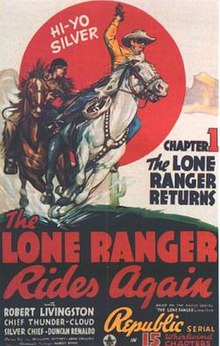
The Lone Ranger is a fictional masked former Texas Ranger who fought outlaws in the American Old West with his Native American friend Tonto. The character has been called an enduring icon of American culture.

Tonto is a fictional character; he is the Native American companion of the Lone Ranger, a popular American Western character created by George W. Trendle and Fran Striker. Tonto has appeared in radio and television series and other presentations of the characters' adventures righting wrongs in 19th-century western United States.

William Bletcher was an American actor. He was known for voice roles for various classic animated characters, most notably Pete in Walt Disney's Mickey Mouse short films and the Big Bad Wolf in Disney's Three Little Pigs.

Mysterious Doctor Satan is a 1940 American film serial directed by William Witney and John English. Produced by Republic Pictures, the serial stars Edward Ciannelli, Robert Wilcox, William Newell, C. Montague Shaw, Ella Neal, and Dorothy Herbert. The title of the serial is derived from that of its chief villain.

Daredevils of the Red Circle (1939) is a 12-chapter Republic Movie Serial starring Charles Quigley, David Sharpe, Herman Brix, Carole Landis, Miles Mander and Charles Middleton. It was directed by William Witney and John English and is considered one of the better serials produced by Republic. The serial was the fourteenth of the sixty-six serials produced by the studio.
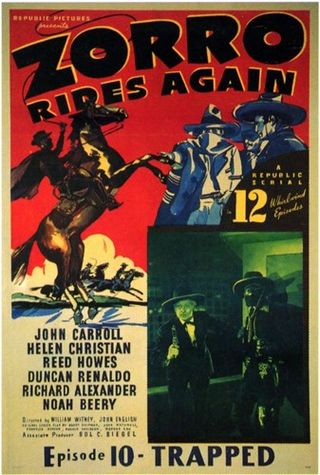
Zorro Rides Again (1937) is a 12-chapter Republic Pictures film serial. It was the eighth of the sixty-six Republic serials, the third with a Western theme and the last produced in 1937. The serial was directed by William Witney & John English in their first collaboration. The serial starred John Carroll who also sang the title song as a modern descendant of the original Zorro with Carroll stunt doubled by Yakima Canutt. The plot is a fairly standard western storyline about a villain attempting to illicitly take valuable land. The setting is a hybrid of modern (1930s) and western elements that was used occasionally in B-Westerns. It was also the first in a series of five Zorro serials, followed by Zorro's Fighting Legion (1939), Zorro's Black Whip (1944), Son of Zorro (1947) and Ghost of Zorro (1949).

The Adventures of Red Ryder is a 1940 American 12-chapter movie serial from Republic Pictures, directed by William Witney and John English and starring Don "Red" Barry and Noah Beery, Sr., based on the Western comic strip Red Ryder by Fred Harmon. This serial is the 18th of the 66 serials produced by Republic.

Jungle Girl is a 1941 15-chapter Republic serial starring Frances Gifford. It was directed by William Witney and John English based on the novel Jungle Girl (1932) by Edgar Rice Burroughs. It was the 22nd of the 66 serials produced by Republic.

Dick Tracy's G-Men (1939) is a 15-Chapter Republic movie serial based on the Dick Tracy comic strip by Chester Gould. It was directed by William Witney and John English.

King of the Royal Mounted (1940) is a Republic Pictures northern serial based on the King of the Royal Mounted comic strip directed by William Witney and John English.

The Vigilantes Are Coming is a 1936 American Republic film serial directed by Ray Taylor and Mack V. Wright. It was the third of the sixty six serials made by Republic Pictures.
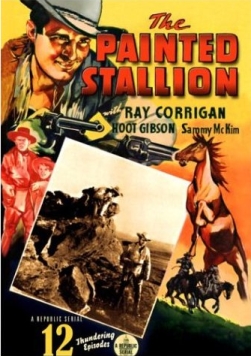
The Painted Stallion is a 1937 American Western film serial from Republic Pictures. It was the sixth Republic serial of the sixty-six made by that company. Western serials such as this made up a third of the serials from Republic, a studio that was also heavily involved in making B-Western feature films at the time.
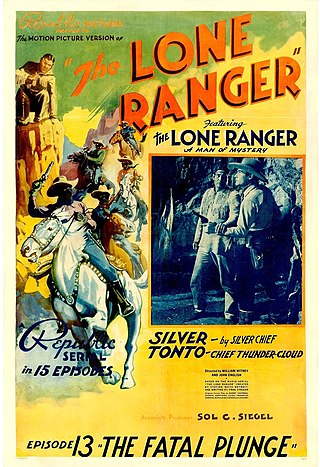
The Lone Ranger is a 1938 American Republic Pictures movie serial based on The Lone Ranger radio program. It was the ninth of the sixty-six serials produced by Republic, the fourth Western and the first Republic serial release of 1938. The following year a sequel serial The Lone Ranger Rides Again was released. The fifteen chapters of the serial were condensed into the film Hi-Yo Silver, which was released in 1940.

Dick Tracy vs. Crime, Inc. (1941) is a Republic Movie serial based on the Dick Tracy comic strip. It was directed by the team of William Witney and John English with Ralph Byrd reprising his role from the earlier serials. It was the last of the four Dick Tracy serials produced by Republic, although Ralph Byrd went on to portray the character again in two features and on television.
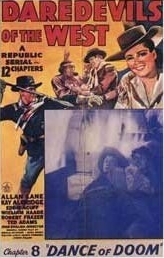
Daredevils of the West is an American Western movie serial consisting of 12 chapters, released by Republic Pictures in 1943 starring Allan Lane and Kay Aldridge. The plot involves a gang of land-grabbers who try to prevent safe passage of the Foster Stage Company through frontier territory. There are similarities of style with other Republic serials released during wartime, such as King of the Mounties and The Masked Marvel.
William Nuelsen Witney was an American film and television director. He is best remembered for the action films he made for Republic Pictures, particularly serials: Dick Tracy Returns, G-Men vs. the Black Dragon, Daredevils of the Red Circle, Zorro's Fighting Legion, and Drums of Fu Manchu. Prolific and pugnacious, Witney began directing while still in his 20s, and continued working until 1982.

Victor Daniels, known professionally as Chief Thundercloud, was an American character actor in Westerns. He is noted for being the first actor to play the role of Tonto, the Lone Ranger's Native-American companion, on the screen.
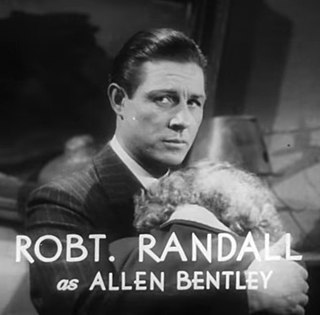
Robert Edward Randall was an American film actor known under his stage name, Robert Livingston. He appeared in 136 films between 1921 and 1975. He was one of the original Three Mesquiteers. He also played The Lone Ranger and Zorro.

The Lone Ranger is an American Western television series that aired on the ABC Television network from 1949 to 1957, with Clayton Moore in the starring role. Jay Silverheels, a member of the Mohawk Aboriginal people in Canada, played the Lone Ranger's Indian companion Tonto.
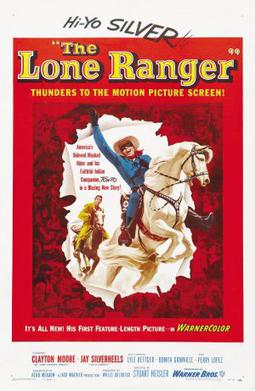
The Lone Ranger is a 1956 Western film based on The Lone Ranger television series starring Clayton Moore and Jay Silverheels. The Lone Ranger was the first of two theatrical features based on the series; it was followed by The Lone Ranger and the Lost City of Gold in 1958.
